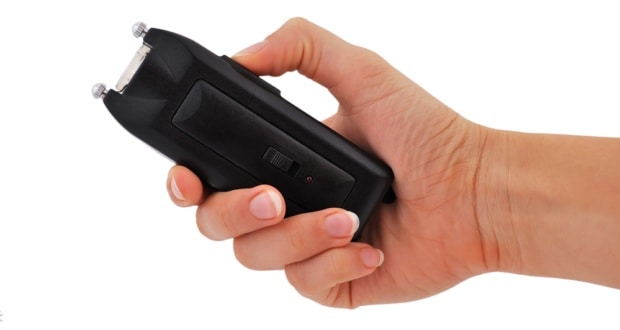
You find yourself staring into the eyes of an angry attacker. You feel threatened. There is no way to escape. You’ve only got a few seconds to act. What are you going to do?
Sometimes the most effective way to stop an attack is to de-escalate the attacker. Even if your attacker is a stranger, there is a motivation behind their actions. Getting past the emotions of a crisis can help you resolve the situation without anyone being injured.
The first and most important thing to remember about de-escalation is this: as people grow angrier, they also experience increased levels of stupidity. Anger can turn the smartest person into an idiot. You cannot logically reason with someone until you can work around this difficult emotion.
Stay calm, ask to talk, and make sure your body posture doesn’t indicate to the attacker that you’re about to defend yourself. Then follow the I-ESCAPE procedure.
Isolate the incident. Don’t give an attacker an audience. People are more willing to attack when others are watching. They don’t want to be considered “weak” or a “coward” by not attacking. Ask to go somewhere else or tell people to leave.
Explore the point of view. Ask the attacker questions in a voice that is as calm as possible. “Why are you doing this?” or “What is bothering you?” are good open-ended questions that can start a conversation. Do not ask closed questions as this may encourage an escalation. “Is this what you really want to do?” is a question that forces a “yes” or “no” answer. If the attacker decides this is something they want to do, no further de-escalation is likely to occur.
Summarize the emotions. Once someone starts talking about their emotions, it is important to employ active listening skills. People naturally open their hearts and minds to others when they know that what they are sharing is being heard. Take a moment, on occasion, to summarize what you’ve heard if the attacker stops to talk. This lets you know that you’re on the same page as them.
A long enough pause can also be a potential opportunity to get away.
Connect feelings to behaviors.If you feel safe in the situation, then consider showing the attacker how their feelings caused them to pursue a behavior that was unsafe for you and potentially for them. Although there are some attackers who create chaos for fun, most attackers have a specific trigger that has caused them to behave this way. If you can get them to identify the trigger and connect it to their behavior, then you have the chance to create change.
Alternative choices can be discussed.Talk about options other than violence that could help to resolve the difficult feelings that are being experienced.
Plan is then developed.Work with the attacker to create an alternative plan that doesn’t involve violence the next time they encounter a trigger.
Enter into a safer environment. Always be aware of an option to escape. If you can get away, then go.
(Source: Cornell University)
De-escalating a situation offers the chance to get away from a situation because your words can be just as powerful as a weapon. If your attacker escalates after you begin speaking, however, it can be useful to have one of the best pepper sprays at the ready to protect yourself. That way you can get away when the opportunity presents itself.







